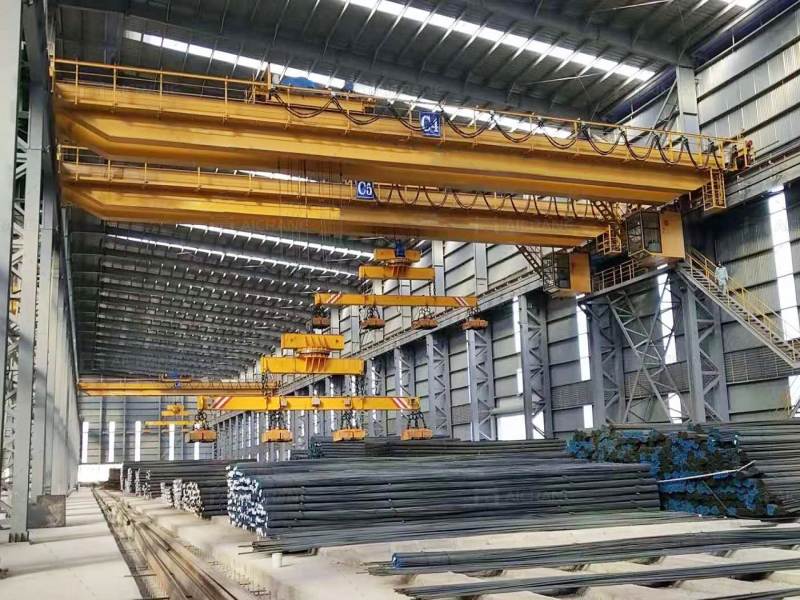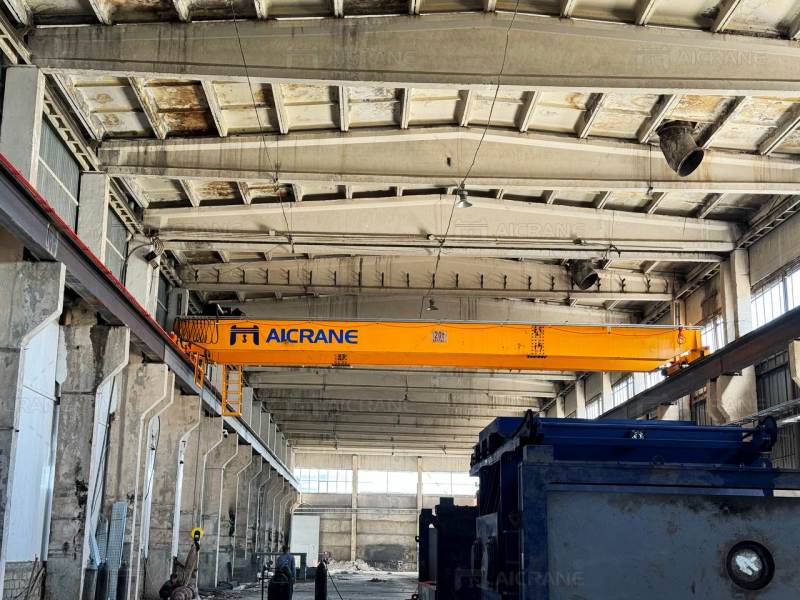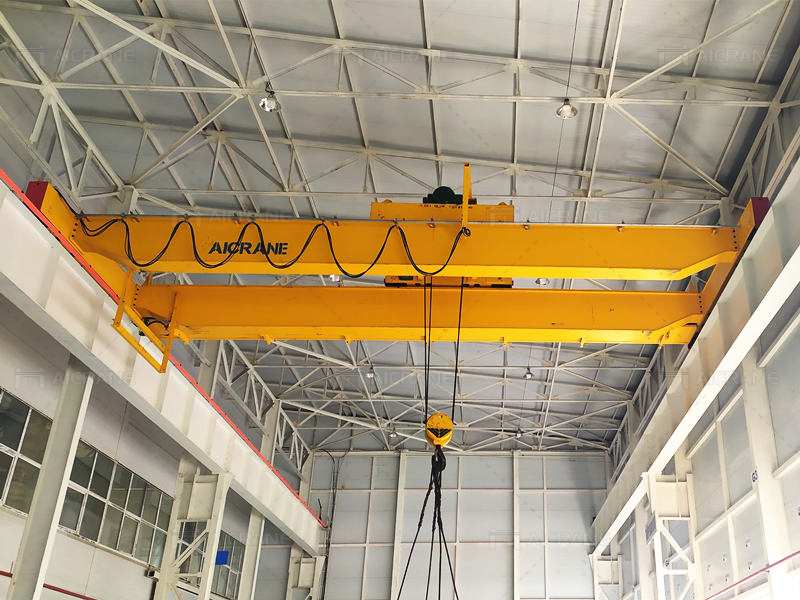Double girder bridge cranes are essential for heavy lifting in various industries, from manufacturing and warehousing to construction and logistics. Known for their strength, durability, and ability to handle large loads, these cranes are crucial for efficient operations. However, like any heavy-duty machinery, double girder bridge cranes can encounter operational issues over time. Understanding these common problems and how to resolve them can minimize downtime, enhance safety, and extend the crane’s lifespan.
In this article, we will explore the most common issues faced by double girder bridge cranes and provide practical solutions to address them.

1. Structural Wear and Fatigue
Issue:
Double girder bridge cranes handle heavy loads frequently, causing wear and fatigue on the structural components, especially the girders, joints, and beams. Repeated loading and unloading can create micro-cracks, deformation, and, in extreme cases, structural failure.
Solution:
- Regular Inspections: Implement a rigorous inspection routine to check for signs of wear, cracks, and deformation.
- Non-Destructive Testing (NDT): Use NDT methods like ultrasonic testing to detect hidden cracks or weaknesses.
- Load Monitoring: Avoid exceeding the crane’s rated load capacity to reduce unnecessary stress on the structure.
- Timely Repairs: Repair or replace worn-out components immediately to prevent further damage or failure.
2. Electrical Issues
Issue:
Electrical faults such as malfunctioning motors, faulty wiring, or damaged control panels can lead to operational failures. These issues may cause erratic crane movements, power surges, or complete shutdowns.
Solution:
- Routine Electrical Maintenance: Regularly inspect and maintain wiring, control panels, and motors.
- Check Connections: Ensure that all connections are tight and secure to prevent arcing or short circuits.
- Replace Faulty Components: Promptly replace damaged or worn electrical components.
- Surge Protection: Install surge protectors to safeguard the system from power fluctuations.
3. Misalignment of Rails and Wheels
Issue:
Over time, the wheels and rails of the electric overhead crane may become misaligned due to continuous operation or improper installation. This misalignment can lead to uneven movement, excessive wheel wear, and even derailment.
Solution:
- Alignment Checks: Conduct regular alignment checks of the rails and wheels.
- Proper Installation: Ensure that the rails are installed correctly, level, and parallel.
- Wheel Replacements: Replace worn-out or damaged wheels to prevent further misalignment.
- Track Maintenance: Clean the rails regularly to remove debris and obstructions.

4. Hoist Mechanism Failures
Issue:
The hoist mechanism is responsible for lifting and lowering loads. Over time, issues such as worn-out wire ropes, failing brakes, or motor malfunctions can compromise the hoist’s performance and safety.
Solution:
- Wire Rope Inspection: Regularly inspect wire ropes for fraying, kinks, or broken strands. Replace damaged ropes immediately.
- Brake Testing: Test the brakes periodically to ensure they engage and release properly.
- Motor Maintenance: Maintain the hoist motor by checking lubrication, bearings, and electrical connections.
- Load Testing: Perform regular load tests to ensure the hoist can handle the rated capacity safely.
5. Gearbox and Lubrication Issues
Issue:
The gearbox is critical for controlling the crane’s movements. Improper lubrication, worn gears, or contamination of the lubricant can lead to overheating, excessive noise, and reduced performance.
Solution:
- Regular Lubrication: Follow the manufacturer’s guidelines for lubrication schedules and use the correct type of lubricant.
- Gearbox Inspection: Inspect the gearbox for wear, leaks, or contamination.
- Clean Lubricants: Use clean lubricants and ensure the gearbox is sealed properly to prevent contamination.
- Temperature Monitoring: Monitor the gearbox temperature to detect early signs of overheating.
6. Overloading and Improper Use
Issue:
Consistently lifting loads beyond the crane’s rated capacity or using the crane improperly can cause mechanical damage, safety hazards, and potential failure. To get high-quality cranes, it is important to choose a reliable over head crane manufacturer.
Solution:
- Training Programs: Ensure all crane operators receive proper training on load limits and safe crane operation.
- Load Monitoring Systems: Install load monitoring systems to prevent accidental overloading.
- Operational Guidelines: Establish clear guidelines for crane use and ensure adherence to safety standards.

7. Wear and Tear on End Trucks
Issue:
End trucks, which support the bridge girders and enable crane equipment movement, can wear out over time due to constant use and heavy loads. This can lead to vibration, noise, and inefficient movement.
Solution:
- Periodic Inspections: Inspect end trucks regularly for signs of wear or damage.
- Bearing Replacement: Replace worn bearings to maintain smooth movement.
- Lubrication: Keep end truck components well-lubricated to reduce friction and wear.
- Alignment: Ensure end trucks are properly aligned with the rails to prevent uneven wear.
8. Corrosion and Environmental Damage
Issue:
Cranes operating in humid, coastal, or chemically corrosive environments are prone to corrosion. This can weaken structural components and reduce the crane’s lifespan.
Solution:
- Protective Coatings: Apply anti-corrosion coatings or galvanization to protect metal surfaces.
- Regular Cleaning: Clean the crane regularly to remove contaminants like salt or chemicals.
- Environmental Controls: When possible, operate cranes in controlled environments to reduce exposure to corrosive elements.
Conclusion
Double girder bridge cranes are vital for many industrial applications, but their reliability depends on proper maintenance and timely resolution of common issues. By understanding potential problems such as structural wear, electrical faults, misalignment, and corrosion, businesses can minimize downtime and improve safety. Regular inspections, proactive maintenance, and operator training are key to ensuring these powerful machines continue to perform efficiently for years to come.